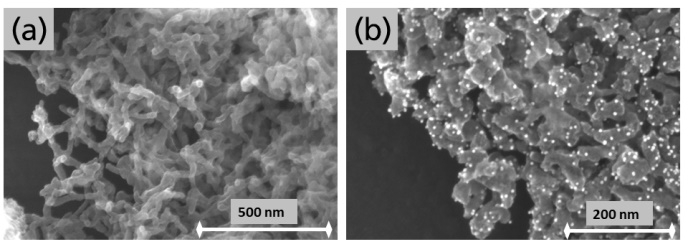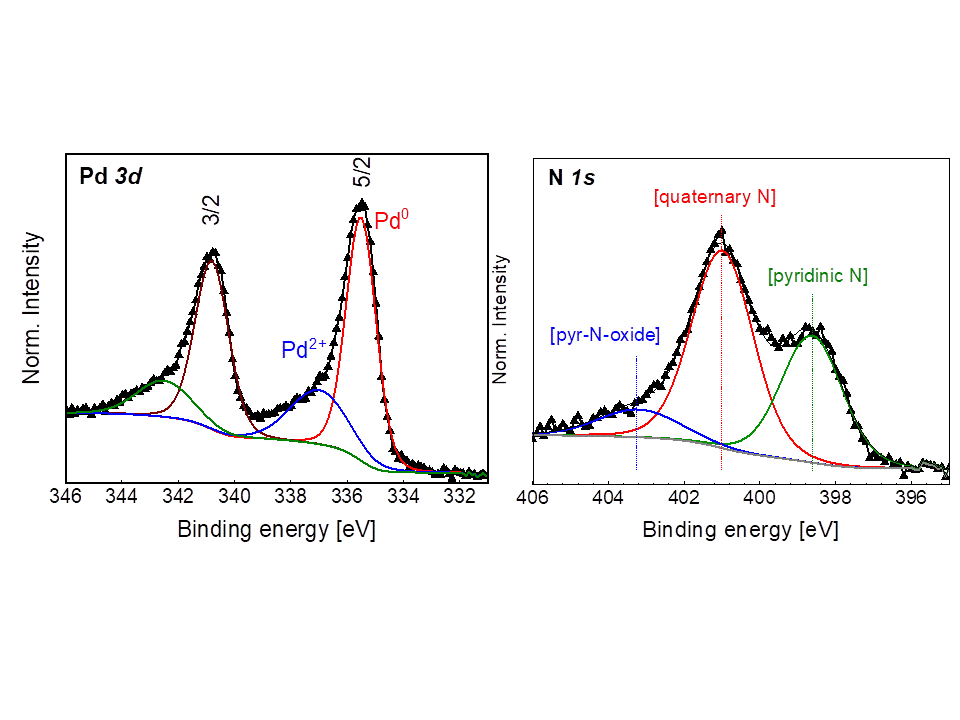| Duration: | 6/2019 - 6/2021 |
| Contracting Authority/ Sponsors: | Self-funded research project of Fraunhofer Society |
| Project Focus: |
Attract: Flex-C-Cat II
Sustainable Carbon Supports for Hydrogenation Catalysis and their Characterization by Near Ambient Pressure X-ray Photoelectron Spectroscopy (NAP-XPS)


The Flex-C-Cat project contributes to the Power to Liquid process chain for sustainable hydrogen production and utilization. Heterogeneous catalysts play an integral role to produce fuels and chemicals in the present and the future. Therefore high performance and efficient catalysts need to be developed and shifted from petroleum to CO2 and bio-based feedstocks. In this context, the Flex-C-Cat II project focuses on the optimization and the characterization of biomass-derived mesoporous carbons as tunable heterogeneous supports for hydrogenation catalysis. The applicability of Flex-C-Cat catalysts will be demonstrated using several exemplary hydrogenations, relevant to both current and evolving industrial practice accompanied by Near-Ambient Pressure X-ray Photoelectron Spectroscopy investigation of these catalysts.
The synthesis of mesoporous carbons is based on Hydrothermal Carbonization (HTC) which is a low temperature (< 200 °C) synthesis process using exemplary biomass precursors and water. Due to the synthesis at low temperature, the HTC approach allows the tuning of the physico-chemical properties, e.g. highly porous carbon supports or possible heterodoping (nitrogen-doped carbon) for tailored properties in various applications. Using simple control mechanisms (e.g. precursor concentration, carbonization temperature), tailored design of functionality and porosity are independently possible.
The Flex-C-Cat II project aims to develop key structure-activity relationships to enable optimization of catalyst performance and properties based on Metal-Support-Interactions. Flex-C-Cat II is flanked by the ExsAKt project that analyses these catalysts by Near-ambient pressure X-ray photoelectron spectroscopy (NAP-XPS) to understand the catalytic behavior under investigated reaction conditions. The in-situ and ex-situ XPS investigations of core states of the elements in nanoparticles and (nitrogen doped) carbon surfaces enable to determine chemical states and interplay of interactions at the surface, which is the key for the catalytic activity. This will lead to improved and more efficient hydrogenation catalysts capable of operation at less expensive conditions like reduced pressures, temperatures, catalyst loads or by the possible use of non-precious metals.